The Biological Leg Springs (BLS) are composed of ligaments, tendons, muscles, and fascia of the lower body. Foot, ankle, shank, knee, and hip are all connected, thus the inter-coordination and intra-coordination of the muscles are crucial for optimal communication at a deep cellular level. Responsible for reciprocal innervation and the role of developing power, dissipating mechanical energy, and redistribution of forces around the muscle-tendon unit.
Don’t read? You can listen to this podcast below that dives deep into this article:
Millions of athletes are seeing a career in sport and their dreams dissipate before their eyes, some before they even get a chance. Currently, the popularity of bodybuilding and powerlifting through social media with a dominance of slow-moving exercise characterizes athletic strength training.
“When the roots of a tree begin to decay, it spreads death to the branches.” ~ Nigerian proverb
The power of media, social media, written words by armchair or laboratory strength coaches and therapists can be profound. It’s a massive uphill battle for athletes to decipher what’s real and what’s not.
This tragedy befalls the sporting world and the strength and conditioning community.
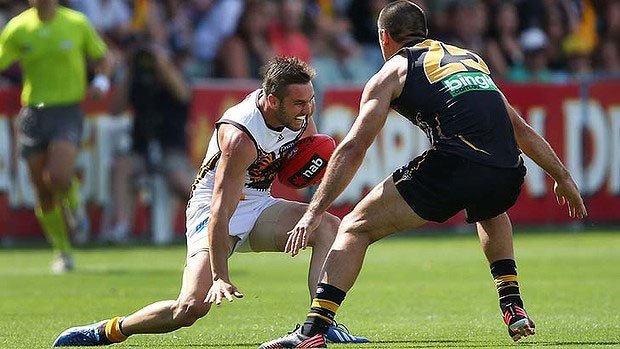
[The Deterioration of Biological Leg Springs: Image of a potential non-contact injury waiting to happen during an Australian Rules.]
Social media has divided the truth with even more extremities. Far too often, we see athletes buying the celebrity hype.
“If Lebron James is doing this, I definitely need to.”
What most fail to realize is that much of social media is about virality. The more extreme, funny, emotional something is, the more it’ll catch on. You get a vicious cycle of celebrities looking to capture your mind space.
What got them to the top, isn’t necessarily what they are doing now. In fact, 9/10 times the work that got them there is boring, foundational, repeated but deliberate hard work.
Because of this, the data shows a huge decline in the biological leg springs which is directly causing an epidemic of injuries.
The system is a massive funnel of money, of supportive aids such as braces, taping from physio to surgery. Not to say that these procedures may not be needed, but they should be the exception, rather than the dominant rule.
I am not saying we will stop injuries because, with sports of high maximal outputs, injuries may happen. But we can prepare the athletes to be durable, and significantly reduce that risk.
Sport scientist, Andrew Charniga asked, “Convincing arguments that something is radically wrong with the training and general preparation of football players in general; and, the NFL in particular, relative to the rising incidence of Achilles tendon ruptures that were presented in previous articles. But, can the problem of the omnipresent lower extremity injury in football be connected with a macro problem of rotting joints in other American sports and the general population?”
The short answer is yes.
We are in dire times with the blind leading the blind with these mummifying exercises that are rotting joints and causing a plethora of injuries.
Is it because they simply don’t care, or is it because they treat athletes like commodities?
Especially for the demographically poor who are looking for a way out of poverty. One gets injured no big deal, there are thousands up next.
It has crossed my mind that these organizations are herding athletes like cows, ready to be slaughtered.
There are billions of dollars to be made off injuries. From rehab, surgery, taping, and wrapping make up a billion-dollar industry and they are coming out with these so-called revolutionary treatment methods that are driven by technology. Even with all the billions of dollars poured into research, the injury rates continue to climb.
They blame it on athletes getting stronger and faster, but the data doesn’t show that. In fact, the data shows that many athletes are getting weaker and tighter. The ones that are strong, are tight, and the ones that are flexible, are weak.
Simply, they are not durable enough to handle the high velocities required of their sport because their preparation is soft, with inadequate stress applied.
What history and science has taught us
“You can’t fall if you can’t bend” – Andrew Charniga
One of my favorite quotes. Think about that statement for a minute. If you are tight and immobile, meaning lack of flexibility, mobility, dynamically or explosively and reactively—how are you going to navigate extremely fast, reactive games based conditions? Conditions where your joints have to bend, bend low, and go deep in the blink of an eye.
Here is an athlete (P.K. Subban) I’ve worked with for years, that just got back up by himself and skates back to the bench. 9 out of 10 times, if the preparation was not there, he would not have walked away from this accident without some sort of potential career-ending leg injury such as a torn ACL.
“Your sport does not require you to get that low so you don’t have to train that low”
If I had a dollar for every time someone has made that comment, I would be a millionaire. This is the most ill-informed comment I hear over and over again.
Here is another example of athletes who have great mobility with strength like Fernando Tatis:
Do you really think you will never be in a situation in life where your joints call for a full bend? I would rethink that if I were you. I would rethink it even more if you want a longer playing career. Better yet, think about how unexpected conditions occur in a sport that is normally played at high velocity. Think about all the highlight videos you’ve ever watched in your life and even the video above where someone lands on P.K. Subban’s leg.
When you are being prescribed a plethora of slow-moving exercises with short ranges of motion, you are just detraining the deep cellular mechanisms needed for fast, reactive unanticipated movement.
Garbage in, garbage out.
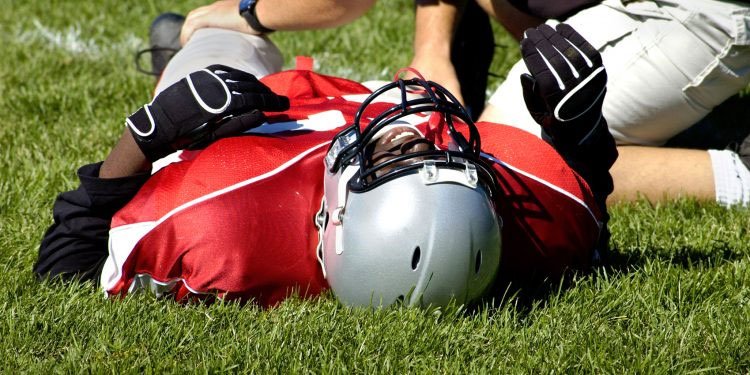
[The Deterioration of Biological Leg Springs: Pandemic of non-contact injuries in American Football]
Or the complete opposite where a coach is putting you in some unstable environment (such as a Bosu ball or swiss ball) to perform circus exercises or silly foot position drills, making you believe you are getting balanced training which is not completely wrong. You will learn to be more balanced on those apparatuses, but are you performing at a circus? No. Are you getting stronger? Impossible.
That’s why program design is an art. We’re talking about preparation for the velocities and impacts of high-level sports, and we must create something that is wholeheartedly best for the athlete’s long term career development.
Why short ranges of motion and slow-moving exercises are ruining athlete careers?
Before I rip apart powerlifting, I want to say that I love powerlifting and Louie Simmons is one of my favorites to go to for knowledge on powerlifting. A few powerlifting exercises sprinkled in the athlete’s program is fine, but what I’ve noticed is that it’s become popular to overwhelm an athlete’s program with plenty of powerlifting exercises.
By the very nature of powerlifting, this discipline emphasizes moving the heaviest load in the shortest distance possible. What this does is makes you extremely strong, but tight and immobile. The basic premise of getting strong is valid, but for an athlete not competing in powerlifting, the challenges are the load-bearing in a full range of motion is deficient.
For example, a powerlifting squat to parallel 90 degrees neglects the deeper range of motion, where the athlete’s butt should be as low as possible.
As well, to leverage and lift heavier, it’s common to shoot the hips way back while squatting where it puts excess stress on the lumbar spine, specifically the L4, L5 vertebrates. This is an injury disaster waiting to occur.
A very common coaching cue for the squats or split squats is, “Don’t make the knees go over the toes.” By following this nonsense way of thinking, you will mummify your ankles, and increase your chances of popping your Achilles tendon, shortening your tibialis anterior that supports and stabilizes the patella. Additionally, it may shorten the hip flexors and eventually blow out your lower back.
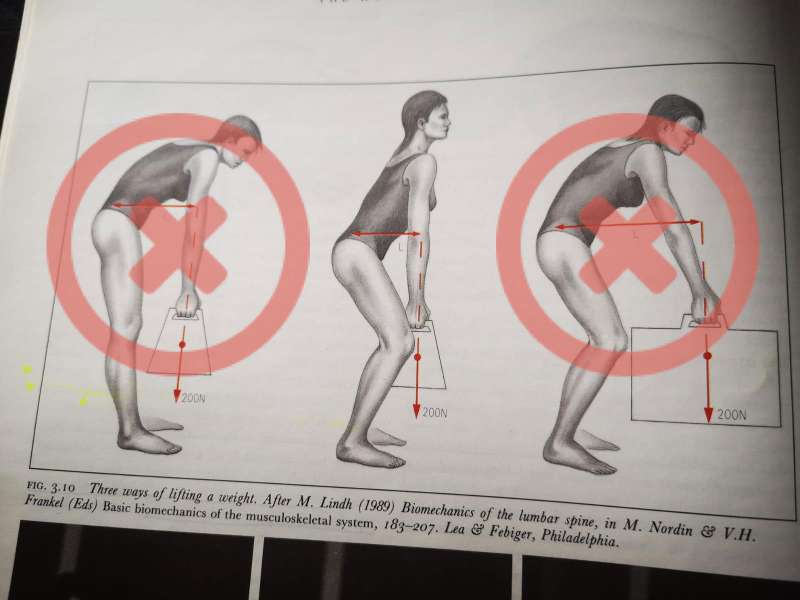
[The Deterioration of Biological Leg Springs: This article is not about squat mechanics. I just want to emphasize the point of keeping the bar as close to the body as possible for optimal back health. (Photo was taken from The Human Machine by R. McNeill Alexander)]
I hope it’s now becoming more clear why you see athletes dropping like flies with Achilles tendon ruptures when they don’t train to the full range of motion.
Klay Thompson, Kevin Durant, DeMarcus Cousins, Wesley Matthews to name a few are some most recent examples that come to mind. Years of performing wide stance back squat with hips shooting backward and never going below parallel or pausing on to a box potentiate a multitude of lower-body issues such as tight hips, knees, and ankles and lower back issues in the long run.
It’s quite common for Powerlifters to have hip replacements. Sumo lift has been created just so the lifter can pull the most weight off the floor for the shortest distance possible and by the nature of the extreme wide stance of Sumo lift creates the environment for hip surgeries due to the stress and shortened range of motion.
But for high-performance athletes in highly explosive sports like Hockey, Basketball, Soccer, Baseball, Volleyball, Tennis, etc., it is criminal to reverse the biological leg springs.
The biological leg springs—the ligaments and tendons have to be stressed and stretched to accommodate, adapt, and become accustomed to these forces in order to be strong and durable.
Training soft will make you soft
“Although professional opinion should be studied carefully and treated with respect, it should not always be taken as the last word”~ Martin Bernal
It’s clear something is amiss as we see the rise in injuries such as ruptured Achilles tendons, ACL and MCL tears, hamstring pulls, and ruptures. Simple non-contact injuries really blow my mind, due to the mindless training methods that have been emphasized from high school through college.
By the time many athletes get to the pros that’s 8 years of these mummifying, slow-moving, and short-range of motion loading patterns that destroy healthy elastic tissue.
As a result, the ability to absorb and distribute mechanical energy as nature intended has been severely compromised or destroyed.
Athletes that are training soft are land mines, waiting to be blown up.
My mentor Pierre Roy once told me as I was going through a phase of dealing with this new generation of athletes with phones, pampering, and social media so-called superstars and they haven’t accomplished anything significant,
“Clance, you can be a tough coach and demand results or you can be a soft coach and get soft results. You choose what you want your legacy to be.”
For me, it’s clear that’s why I strive for maximum results. That’s why I often push the boundaries, never settling for the status quo because that’s what is needed to bring out the elite in an athlete.
My four principles are simple; train hard, train heavy, train frequently, and train to the full range of motion.
You have to understand your needs for your sport. In my experience, 99% of the time, those needs call for loading that is heavy relative to your body weight, to a full range of motion, and to move those loads as fast and as frequently as possible.
But it takes time to build the foundation for the body, specifically the ligaments and tendons to adapt to the load. The longer you’ve been mummifying yourself, the longer it’ll take for those ligaments and tendons to adapt.
Don’t let ego get the best of you. Do not move too quickly or too fast with putting on a heavyweight. That’s why there is a blend of art and science.
As a coach, I assess every session with my athletes. I often have to pull them back and be patient and mindful of the adaptation process for the ligaments and tendons with these new ranges of motion.
That is why we preach to our athletes whether they want to hear it or not to take small jumps with a good 2-3 rep cushion. No straining to achieve the rep target.
The Biological Leg Springs (BLS) are composed of ligaments, tendons, muscles, and fascia of the lower body. Foot, ankle, shank, knee, and hip are all connected, thus the inter-coordination and intra-coordination of the muscles are crucial for optimal communication at a deep cellular level. This deeper cellular level is responsible for reciprocal innervation and the role of developing power, dissipating mechanical energy, and redistribution of forces around the muscle-tendon unit. (Zatsiorsky & Kraemer, 2006).
If your strength and conditioning coach is not structuring your weight training program in such a way, you are begging for serious injury.
The storage of concentrated energy in one location is the problem, caused by the short range of motion exercise over long periods of time. Thus the BLS spring, which is like an elastic band, gets tight and dried up and then pops when called upon to exceed its range of motion.
What needs to be done is to train the BLS as nature intended. Do not disrupt or deteriorate our springs. We must enhance and nurture them.
The failure to recognize the body’s ligaments, tendons and fascia as spring mechanisms serving a multitude of functions in sport and should be trained with this thought process in mind is the path to remapping one’s body.
How modern training methodologies are reversing your biological leg springs
I’m going to be illustrating and talking about some of the myths that are popular out there, and why if you are pitched some of these delusion methods, you must run the other way and find someone that has done their research and has had field experience to back it up.
Delusional Method 1: Don’t train to the full range of motion because it will hurt you because you don’t use the full range of motion in your sport.
In a research paper written by Hagen Hartmann, Klaus Wirth, Markus Klusemann (Ó Springer International Publishing Switzerland, 3 July 2013), it stated:
“For elite athletes, the perennial training structure in deep front and back squats obtains target values between 1.5- to 2-fold bodyweight [164]. It is unclear why a higher risk of injury of passive tissues in deep squats is hypothesized [5, 81], although considerably lower weights are accomplished in this variant. When compared with half and quarter squats, in the deep squat, lower knee joint and spinal joint stress can be expected.
Provided that the technique is learned accurately under expert supervision and with pro-aggressive training loads, the deep squat presents an effective training exercise for protection against injuries and strengthening of the lower extremity.”
Their research suggests performing exercises properly in the full ranges of motion, will add to the protection of the lower extremity joints and prevent injuries.
If training to the full range of motion will hurt you or believed to create unstable knees and ankles, then shouldn’t athletes that do these regularly (ie. Olympic weightlifters) be flooding the doctor’s offices?
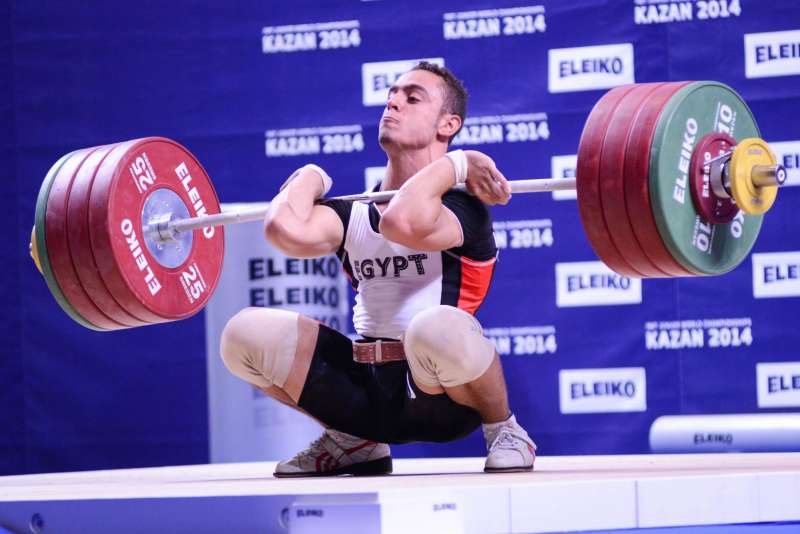
[The Deterioration of Biological Leg Springs: Photo of Silver medalist in 2014 World Junior Championships 77 kg Weight Class, catching the bar at supporting, and redistributing loads far greater than 2x his bodyweight. Photo by Clance Laylor]

Delusional Method 2: We should only do safety training and safe movement patterns to avoid injuries.
There is a new virus plaguing athletes across the world that seems like common sense, but neglected the reason why they were training in the first place.
While these so-called safe exercises are allowing the athlete to perform the exercise safely, a big reason for weight training is supposed to help athletes prevent injuries, dealing with the forces that are applied in their respective sport. And these so-called safe exercises are doing the opposite.
Here is a small list of the safe exercises that are in vogue as I write this:
- Quarter and half squats.
- Stability training on unstable apparatuses such as Bosu balls.
- Planks of all sorts for core activation.
- Glute activation with barbell bridges, and single-leg bridges.
- Single leg squats such as pistols supposedly have a great transfer to speed and strength.
- Trap bar deadlifts with no ankle mobility replacing the full squat.
- Heavy single-leg squats with a safety bar with no ankle over toes and limited depth also seemingly replacing squats.
Hundreds of movement programs and specialists that are supposed to help you move more efficiently as an athlete are deteriorating your durability with all these nonsense safe exercises.
While I am not against these exercises used in the right context, but when I see programs that are 70%+ encompassing only these so-called safe exercises to build up an athlete truly makes no sense and is criminal. It is simply dangerous for the athlete.
Sports chiropractor Dr. Mahmoud Zaerian, DC, CSCS, BA (Kin) of the National Men’s Gymnastic team cited,
“In general, ACL injuries on landing happen in the first 10-20 degrees of knee flexion as you absorb your body weight. In those circumstances, prevention measures are most important around the foot and ankle. If the person can control prono-supination they won’t cause excessive internal rotation of the tibia and subsequently an injury of the ACL. The other kinds of ACL injuries a lot of those are through contact or forceful blow. To mitigate those the most important thing is being strong to handle adverse forces which athletes will need and having great strength through a large range of motion.”
The purpose of weight training is to prepare the athlete (you) for the sport. That means, getting them stronger, faster, more explosive, mobile, agile, and durable. We are not building you to be a professional gym rat.
Strength training is complicated enough, but if you stick to these basic principles, then I guarantee you will be healthier in the long run, not to mention tremendous performance improvements.
We have all the money, all the technology, and all the resources in the world, and yet the injury rates for athletes are skyrocketing. Does that not concern you? Does that not make you think that someone out there is benefiting from all the misfortunes?
These delusional methods spend more money on marketing than the research and development aspect of things. They usually have a singular idea or concept that looks good on paper or visually, but neglects other importance in the real world.
And time and time again, these gimmicks fizzle away. But these practitioners are already running to the bank with stacks of cash and ruined hundreds of thousands of athletes’ careers.
These so-called safe exercises are easy to teach, easy to sell, and easier to monopolize. There are billions to be made because injuries benefit insurance, which benefits practitioners, which benefits bandaid solutions like wrapping.
Because the real work to develop durable athletes is hard. So companies spend billions on accomplished professional athletes, trick them into thinking these so-called safe exercises, and safe products are working, so that millions of fans will follow and demand it hence creating a vicious cycle of the blind leading the blind.
Delusional Method 3: Training heavy will hurt you and not help in your sport.
Engineers commonly design structures 2x as strong as the greatest loads they are expected to bear.
Let that sink in for a moment. Engineers build structures to withstand forces because they will prevent catastrophes. Balance, strength, and durability.
That is what you must have as an athlete. Durability is just as important if not more important than all the other performance qualities for sport.
It does not matter how strong, fast, or powerful you are if you are sitting on the sideline with an injury. You are not contributing to the game if you are not on the court, field, or ice.
One of the many reasons why I use Olympic weightlifting exercises such as snatch cleans, squats in heavier loads (when the athlete is ready) is to create durability. It’s not hard to teach, but easy to teach improperly.
Sports scientist Andrew Charniga wrote,
“It is interesting to note, there is no mention in the literature cited of weightlifters and other athletes who perform high-intensity large amplitude range of motion exercises like snatches, cleans, and squats in the context of the American morass of lower extremity injuries and radical joint replacement surgeries.”
What we can learn from Olympic weightlifters is that simple full cleans to rock bottom, torso upright, and knees over toes significantly reduce ACL, MCL tears, Achilles tendon ruptures, and ankle sprains for starters as a small sample of benefits.
If Olympic weightlifting is regarded as unsafe because of the full range of motion with heavy loading 90% of the time, then wouldn’t Olympic Weightlifters be plagued with injuries such as ACL, Achilles, and hamstring ruptures?
As I’ve illustrated in the research above, weightlifters incur one of the lowest injury rates per number of training hours. Achilles tendon ruptures are pretty much nonexistent in weightlifting but an epidemic in the NFL and NBA.
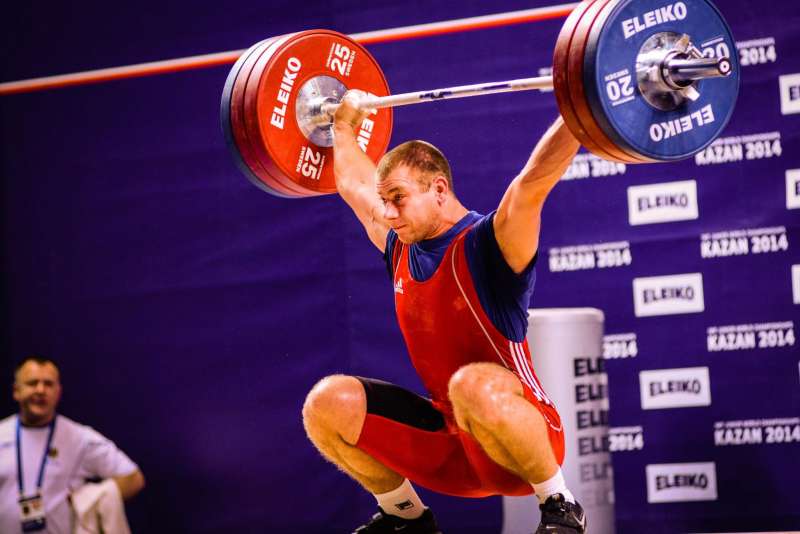
[The Deterioration of Biological Leg Springs: 2014 World Junior Championships. Photo by Clance Laylor]
The point I am trying to make is athletes who leverage Olympic weightlifting as a training aid when done properly will receive the benefits of strength, power, explosiveness, and injury prevention.
Unlike professional Olympic weightlifters where they are doing voluminous loads of 90%+ year in, year out, elite athletes in explosive sports using these proper exercises with proper prescriptions will bring down the risk of serious career-ending injury to almost 0.
Summary of takeaways
If the scientific data is too long to read and digest yourself, then here is a summary of the top things you must take away from this:
- Leave your ego at the door, and do everything to the full range of motion before loading heavier weights.
- Do not go heavy too quickly, and you need to let the body adapt to the new stresses, ranges, and load.
- One of the worst things an athlete can do is prepare for dynamic sports performing ‘safe’ conditioning exercises and doing them poorly.
- You are preparing yourself for the stresses of your sport, not to become a professional gym rat.
Critical thinking seems to be lost in the midst of the herd mentality, but let me leave you with this to ponder:
Do you want to run with a lost herd or do you want to stand out with strength that makes you dominate?
You can do much of this on your own with proper help. You can get a deeper dive into the principles that will help you in the book, DOMINATE: They Can’t Ignore You, an #1 Amazon Best Seller for Sports Training.
Whether you are a young athlete (under 12) and want to get started with a proper foundation or an older athlete (12+) with already bad habits and improper training, this book will arm you with the knowledge to remap your body for elite strength, power, speed along with durability.
Watch this episode of Dominate Discussions where I sit down with Weightlifter John Nardi to discuss the biological legs spring
About the Author: Clance Laylor
Related Articles


